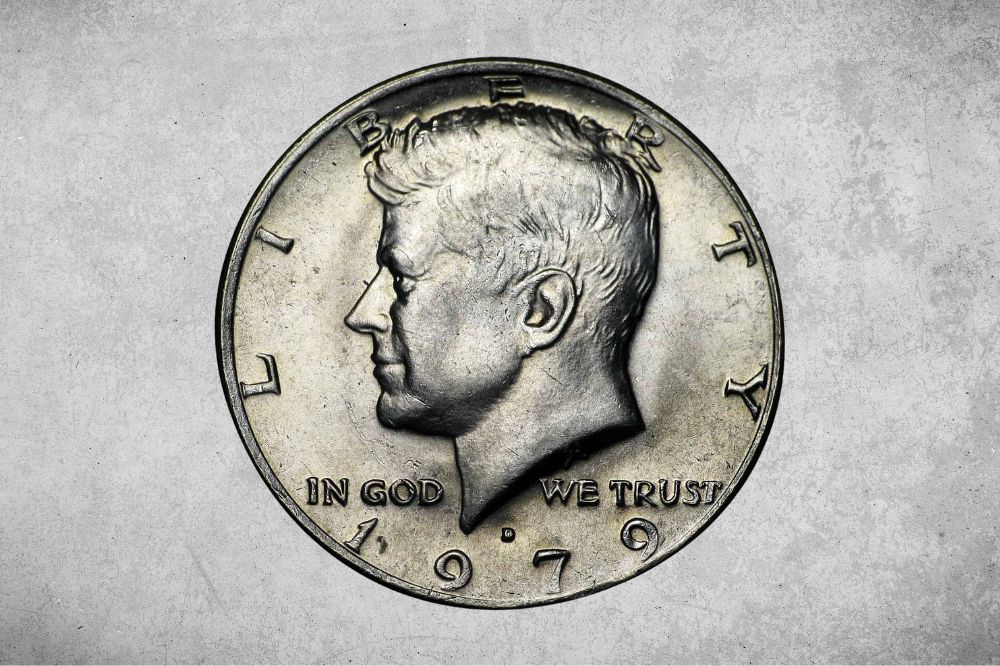Do 1979 half dollars fascinate you? Are you thinking of collecting these coins? Are you trying to sell them? If so, we have some information that can help you out.
In today’s post, we are going to tell you all you need to know about the 1979 half dollar value, history, features, and varieties.
1979 Half Dollar Details
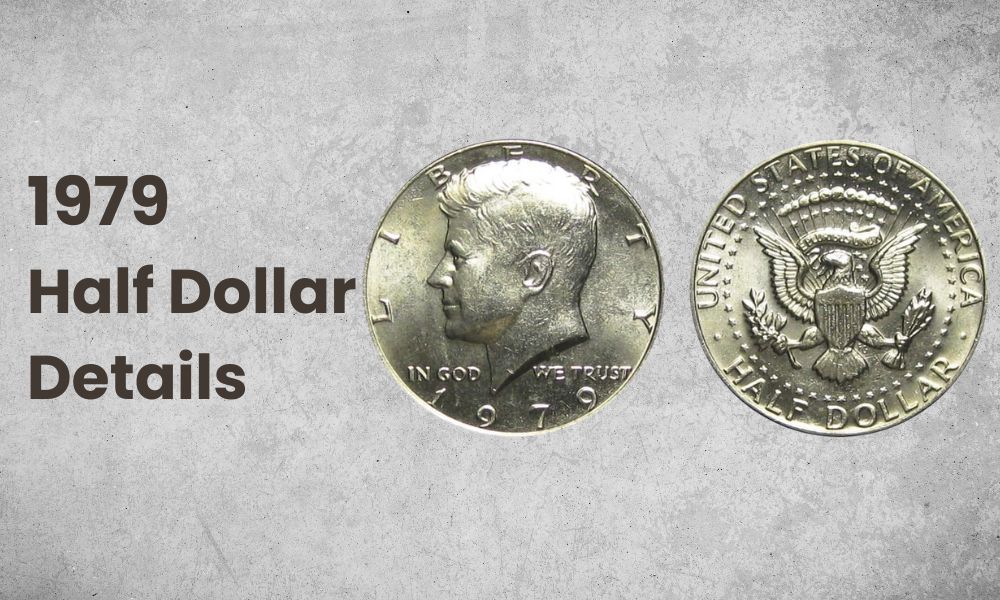
- Category: Kennedy Half Dollars
- Total Mintage: 87,804,597
- Minting place: Philadelphia, San Francisco, and Denver
- Diameter: 30.6 mm
- Thickness: 2.15 mm
- Weight: 11.34 g
- Edge: Reeded
- Original value: 50 cents ( $0.50)
- Composition: 91.67% copper and 8.33% nickel
- Obverse Designer: Gilroy Roberts
- Reverse Designer: Frank Gasparro
The 1979 Half Dollar’s Obverse Design
This coin’s obverse bears the image of John F. Kennedy’s head facing left at its center. Its designer, Gilroy Roberts, developed it from his previous work with the Kennedy Inaugural medal. He was the mint’s chief engraver from 1948 to 1964.
Apart from Kennedy’s head, Roberts also placed the word “LIBERTY” on the coin, along the top and side rims of the obverse. The word begins on the left near Kennedy’s mouth and ends on the right, behind his neck.
The words “IN GOD” also appear under Kennedy’s chin, on the left side of his neck, and “WE TRUST” was put under the neck cut off, in line with the first words. To finish off the design, Roberts placed the date along the bottom rim of the coin.
The 1979 Half Dollar’s Reverse Design
While the 1979 half dollar’s obverse design is simple, its reverse design is complicated. To create this design, engraver Frank Gasparro engraved the presidential coat of arms at the center of the coin.
This features a left-facing eagle in the middle with open arms and legs and a shield at its center. The eagle’s right claw is holding 13 arrows, representing the United States’ first 13 states.
On the other hand, its left claw is holding an olive branch; this symbolizes peace. Just above the eagle’s head, there’s a banner with the US motto, “E PLURIBUS UNUM”. And below its right leg are the designer’s initials; FG.
Around the presidential coat of arms, there are 50 stars, representing the 50 states of the US. Beyond that, along the rim of the coin, the words “UNITED STATES OF AMERICA” are written in the top part from left to right.
The bottom rim bears the inscription “HALF DOLLAR” with a dot before and after it.
Other Features of the 1979 Half Dollar
The 1979 half dollar is a round coin with 150 reeds along its edge. Beyond that, it has a diameter of 30.6 mm and a thickness of 2.15 mm. This coin is made of a copper core cladded with a mixture of copper and nickel.
This cladding has a composition of 75% copper and 25% nickel. This gives it a cumulative composition of 91.67% copper and 8.33% nickel.
1979 Half Dollar Value Chart
| 1979 Half Dollar Value Chart | ||||
| Condition | 1979 No Mint Mark Half Dollar (P) | 1979 “D” Half Dollar | 1979 “S” Type 1 Half Dollar | 1979 “S” Type 2 Half Dollar |
| XF45 | $1 | $1 | N/A | N/A |
| AU55 | $1 | $1 | N/A | N/A |
| MS63 | $9 | $9 | N/A | N/A |
| MS67+ | $650 | $3,500 | N/A | N/A |
| PR63 | N/A | N/A | $6 | $12 |
| PR67 | N/A | N/A | $10 | $16 |
| PR70 | N/A | N/A | $56 | $150 |
1979 Half Dollar Value and Varieties Guide
1979 No Mint Mark Half Dollar (P) Value
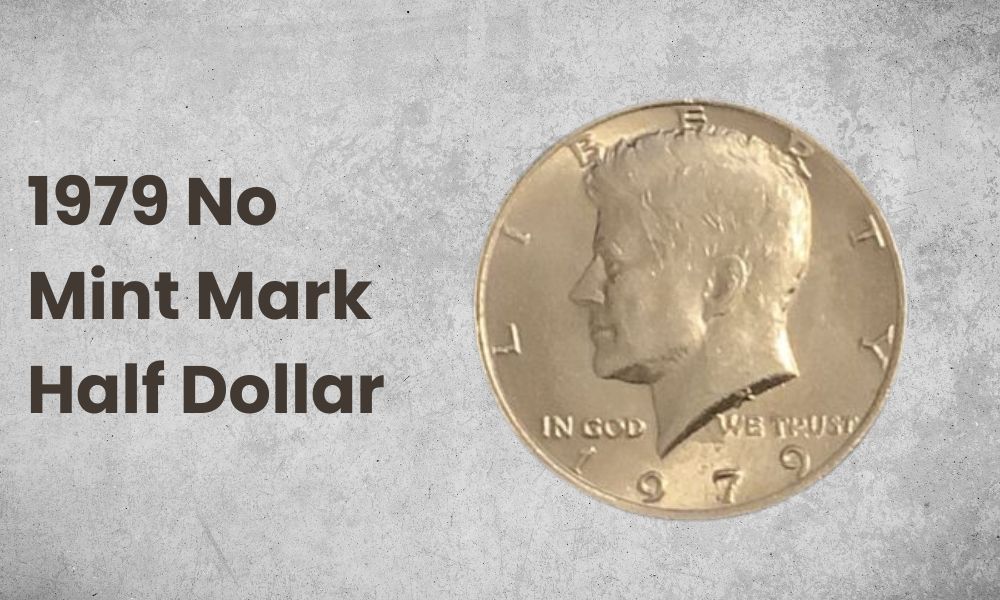
- Category: Kennedy Half Dollar
- Mint: None
- Minting place: Philadelphia
- Year: 1979
- Edge: Reeded
- Mintage: 68,312,000
- Obverse Designer: Gilroy Roberts
- Reverse Designer: Frank Gasparro
- Original value: 50 cents ($0.50)
- Current value: $1 to $650
- %Composition: 8.33% nickel and 91.67% copper
- Mass: 11.34 g
- Diameter: 30.6 mm
In 1979, the Philadelphia mint produced 68,312,000 Kennedy half dollars. None of these had a mint mark. Due to their high mintage, these coins are readily available to date at affordable prices.
You can usually get an average-grade one at around $1. On the other hand, mint-state samples go for $5 to $650. However, a few pristine ones can go for as much as $4,100 per piece.
1979 “D” Half Dollar Value
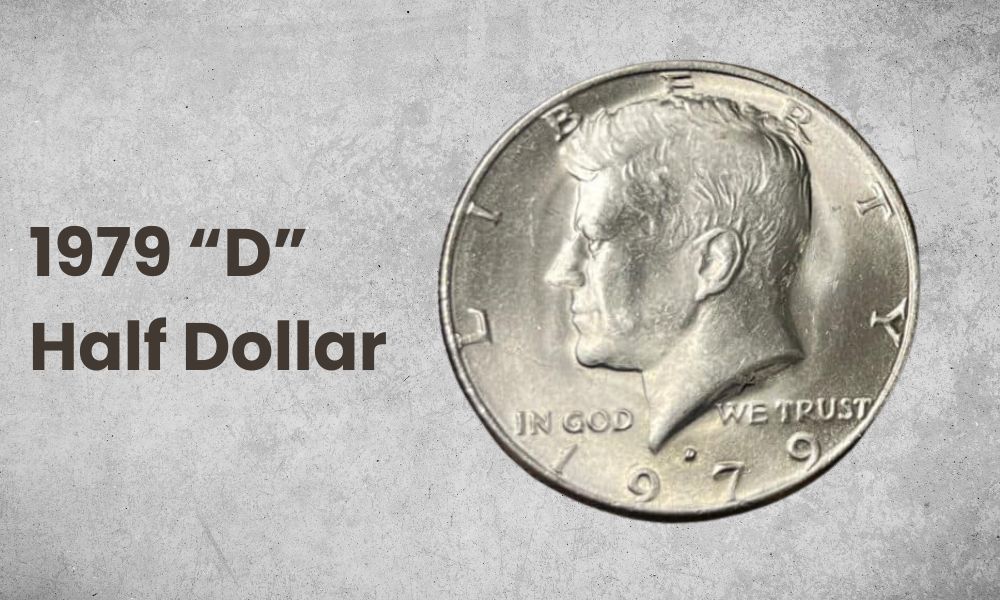
- Category: Kennedy Half Dollar
- Mint: “D”
- Minting place: Denver
- Year: 1979
- Edge: Reeded
- Mintage: 15,815,422
- Obverse Designer: Gilroy Roberts
- Reverse Designer: Frank Gasparro
- Original value: 50 cents ($0.50)
- Current value: $1 to $3,500
- %Composition: 8.33% nickel and 91.67% copper
- Mass: 11.34 g
- Diameter: 30.6 mm
In 1979, the Denver mint produced 15,815,422 half dollars. Each of these had a “D” mint mark on the obverse side, just above the date inscription. Because of their high mintage, these coins are still readily available at low prices.
You can get an average-grade one at a mere $1. However, the mint-state ones go for much higher. Those with a grading of MS67 can go for $400 to $800. An MS67+ can even sell for a whopping $2,703.
1979 “S” Proof Half Dollar Value
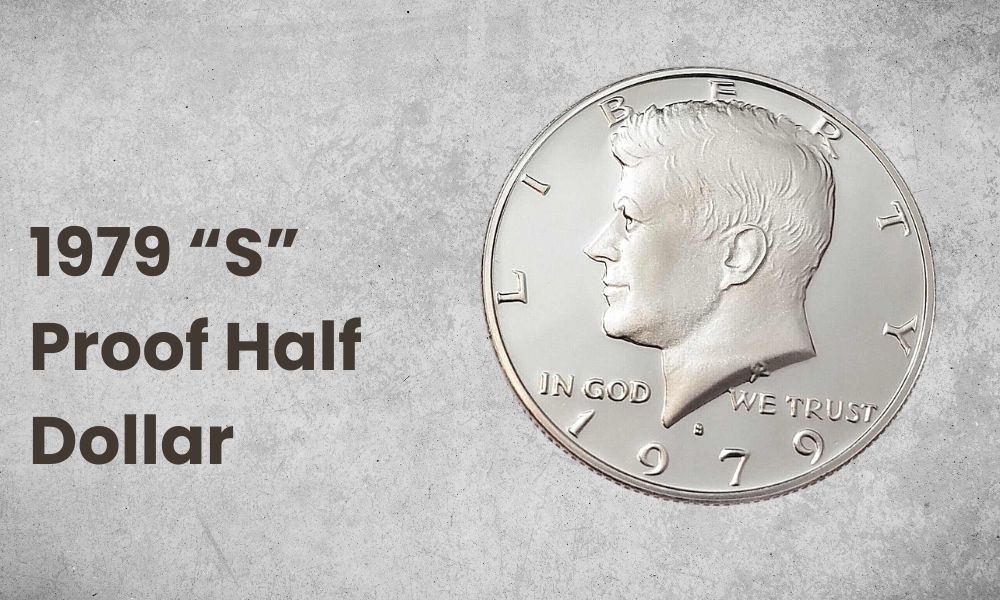
- Category: Kennedy Half Dollar
- Mint: “S”
- Minting place: San Francisco
- Year: 1979
- Edge: Reeded
- Mintage: 3,677,175
- Obverse Designer: Gilroy Roberts
- Reverse Designer: Frank Gasparro
- Original value: 50 cents ($0.50)
- Current value: $5 to $150
- %Composition: 8.33% nickel and 91.67% copper
- Mass: 11.34 g
- Diameter: 30.6 mm
In 1979, the San Francisco mint produced 3,677,175 half dollars. Each of these was a proof coin and had an “S” mint mark above the date inscription. However, the mint marks on these coins don’t look the same.
When you examine them closely, you realize that some have an “S” mint mark that’s filled with ink while others have an empty clean-cut one. Among collectors, the first kind of coin is referred to as Type 1 and the second as Type 2.
Interestingly, the Type 1 coins are usually more affordable than the Type 2 ones. Depending on grade, you can usually get one for $5 to $56. On the other hand, Type 2 versions can go for as much as $200.
Also Read: Top 15 Most Valuable Kennedy Half Dollar Worth Money
1979 Half Dollar History
The Kennedy half dollar was first launched in 1964 to commemorate John F. Kennedy, the 35th US president, after his assassination. It’s minted to date and replaced the Franklin half dollar that was minted from 1948 to 1963.
When Kennedy died in 1963, mint director Eva Adams approached chief engraver Gilroy Roberts and commissioned him to create the obverse design of this half dollar.
This was after the mint settled on putting Kennedy’s face on the half dollar instead of the dollar or quarter dollar.
Because the minting was supposed to begin in January of the next year, Roberts simply modified the Kennedy design he had previously created for a medal.
On the other hand, Frank Gasparro started modifying the design he made for the back of the same medal. This is what ended up on the 1979 half dollar’s reverse. After all, Kennedy had approved both Roberts’ and Gasparro’s medal designs before his death.
Also, Kennedy’s widow, Jacqueline Kennedy, looked over the final coin designs and approved them. However, she did suggest that Kennedy’s hair be altered a little. She even suggested that a full image be used instead of a bust.
But Roberts declined to implement the last suggestion because he found the bust profile more attractive and didn’t have time to change it anyway.
Composition changes
Interestingly, the Kennedy half dollar was originally made of 90% silver and 10% copper.
This coin was released in March 1964 and was popular, even abroad. Some collectors even hoarded it to keep in remembrance of Kennedy.
However, as the silver prices increased, the mint decided to reduce the silver content in coins. That’s why in 1965, it started producing coins that are 40% silver and 60% copper. These coins had a core of 21% silver and 79% copper.
This core was clad with a layer of 20% copper and 80% silver. However, this composition was only maintained until 1970. From 1971, the mint switched to a copper core clad with 75% copper and 25% nickel.
But keep in mind that the mint has continued to produce silver proofs over the years. For instance, it produced proofs with 90% silver from 1992 to 2018. Also, it has been producing 99.9% silver proofs since 2019.
Design changes
The Kennedy half dollar’s design has been changed once; in 1975. This year, a reverse design was created to celebrate the 1976 US Bicentennial. But when it came to 1977, the mint went back to the original designs.
However, there are plans to change these designs from 2027 to 2030. Interestingly, there have been years when the minting of Kennedy half dollars has been stopped. This first happened in 1987.
Also, the mint stopped producing these coins for general circulation in 2002; this continued until 2020. However, some special gold half dollars were produced in 2014 to celebrate these coins’ 50th anniversary.
1979 Half Dollar Grading
Grading 1979 half dollars and other Kennedy half dollars requires some experience. As such, it’s always best to send any coin you suspect is valuable to professional grading agencies. Just ensure that it isn’t contaminated before sending them in.
Keep in mind though; professionally grading a 1979 half dollar can many times prove a waste of money considering its low average value and the grading fee you’ll have to pay.
List of 1979 Half Dollar Errors
1. 1979 Half Dollar Improperly Annealed
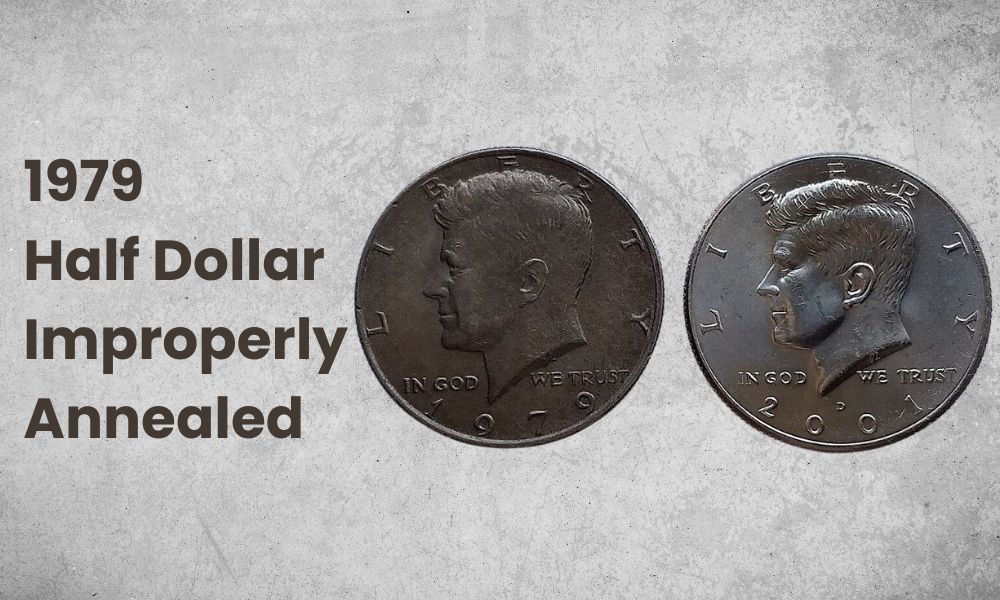
An improper annealing error produces a coin with a red layer of copper. The reason for this is the migration of copper molecules to the surface of the coin. Sometimes, you can even notice the red copper layer peeling off, revealing a black surface.
This layer can be thick or thin. Also, you may notice red, black, gray, or brown spots instead of a complete layer. Whatever the case, this error can add a little value to your coin. An NGC MS65 1979 D half dollar with this error can go for around $90 at an auction.
2. 1979 Half Dollar Broad Struck
A broad strike error occurs when a coin is struck without a collar and spreads out more than it should. The design on this coin is usually centered; if it’s not the name of the error changes to incorporate this fact.
A broad strike error can increase the value of a 1979 half dollar a little bit. For instance, an ICG MS65 example with this error can sell for around $20.
3. 1979 Half Dollar Missing Clad Layer
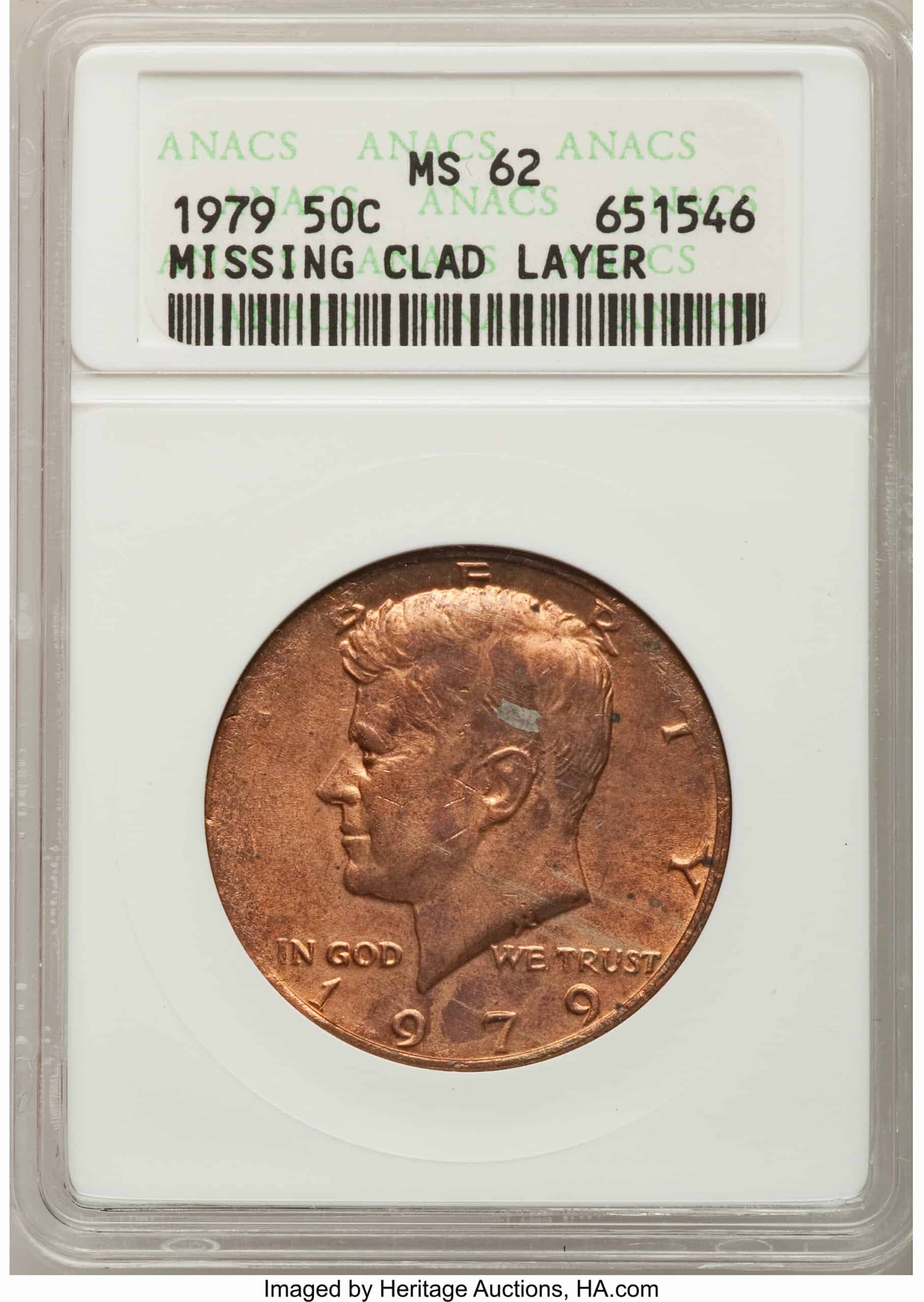
This error is self-explanatory; it involves a coin not having the cladding it’s supposed to have. In the 1979 half dollar, this presents as a pure copper red side. Keep in mind that coins with this error weigh less and are thinner than they’re supposed to.
That’s how you can tell them apart from those with an improper annealing error. Ultimately, this error can add a little bit of value to your half dollar. An ANACS MS62 sample with this error on its obverse sold for around $300.
4. 1979 Half Dollar Struck on Wrong Planchet
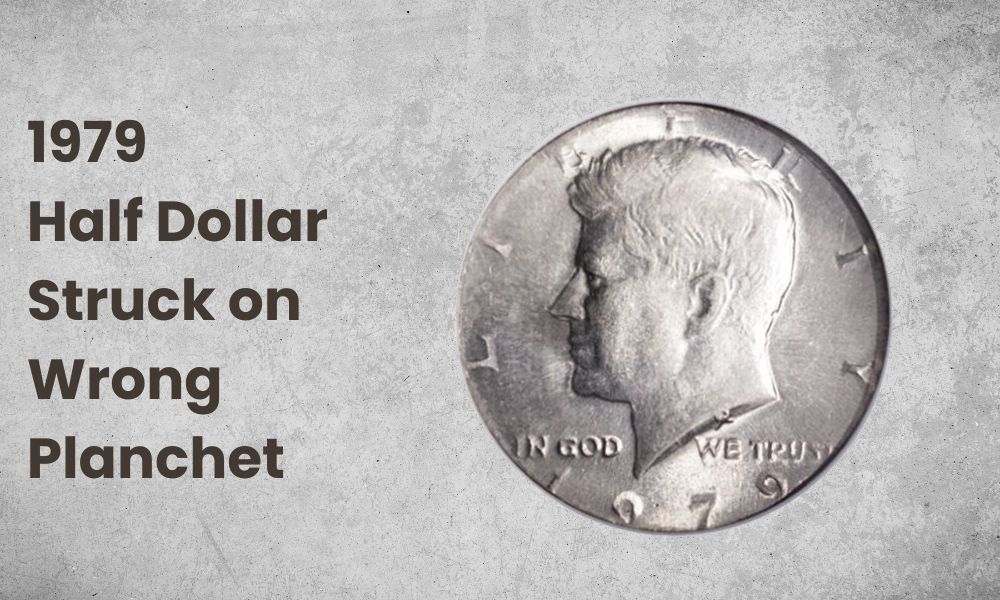
This error occurs when a coin is struck on a planchet meant for another coin type. As such, the resulting coin will have the wrong composition and/or size. The design may not even fit on it properly.
This error is valuable. For instance, a PCGS MS65 1979 half dollar struck on a Susan B. Anthony $1 planchet sold for over $900.
5. 1979 Half Dollar Struck Off-Center
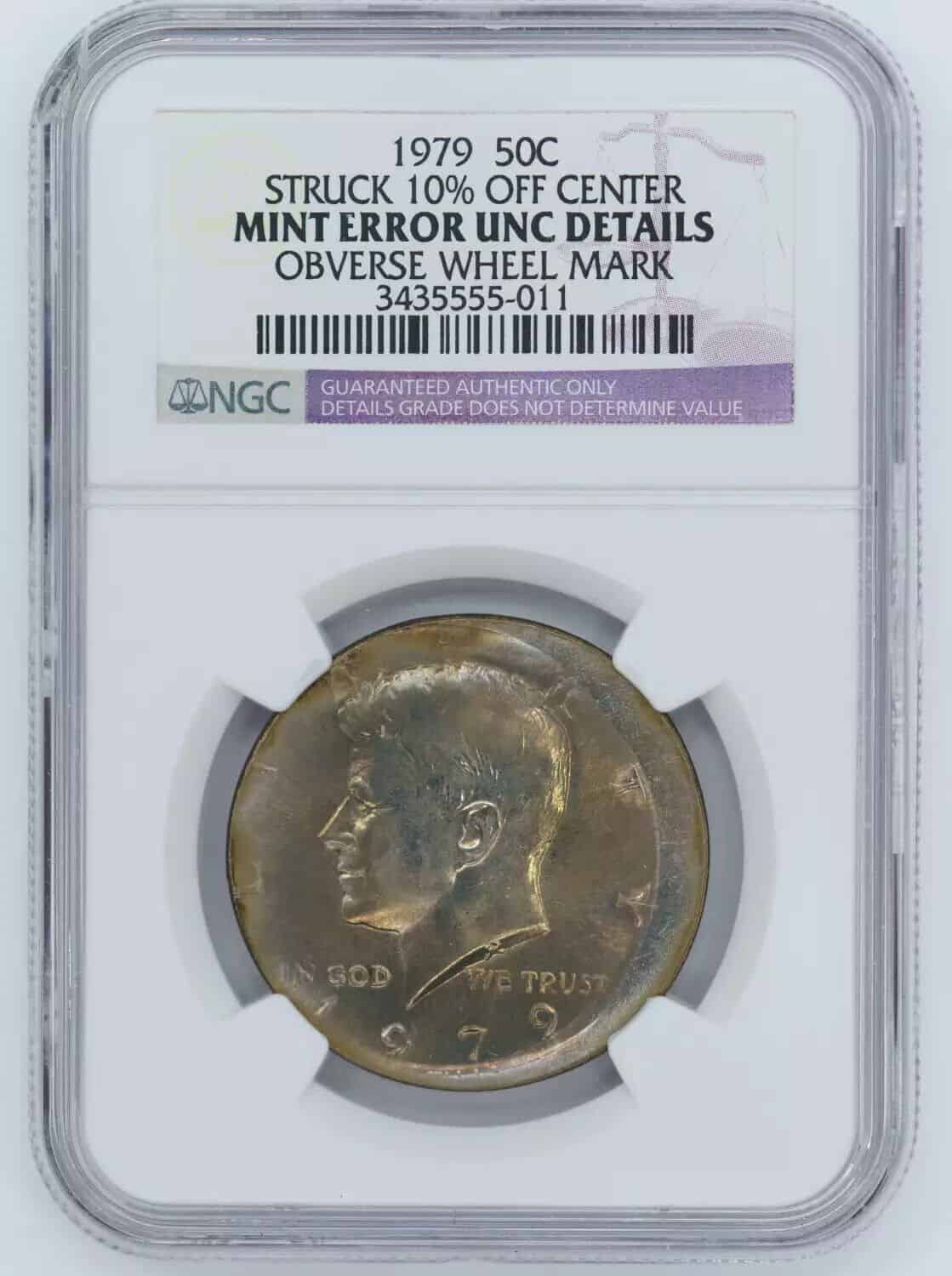
When a coin isn’t placed properly in the dies, it ends up partially struck. When this results in an incomplete design, the error is considered an off-center strike. Generally, these errors are more valuable the more off-center they are (the less the design present).
As such, a 70% off-center struck coin is more valuable than a 10% off-center struck one. An NGC MS61 1979 half dollar that’s 10% struck off-center sells for over $560.
1979 Half Dollar FAQ
Why does my half dollar have two dates?
This is a half dollar that was produced for a special occasion like the 50th anniversary of the Kennedy half dollar.
